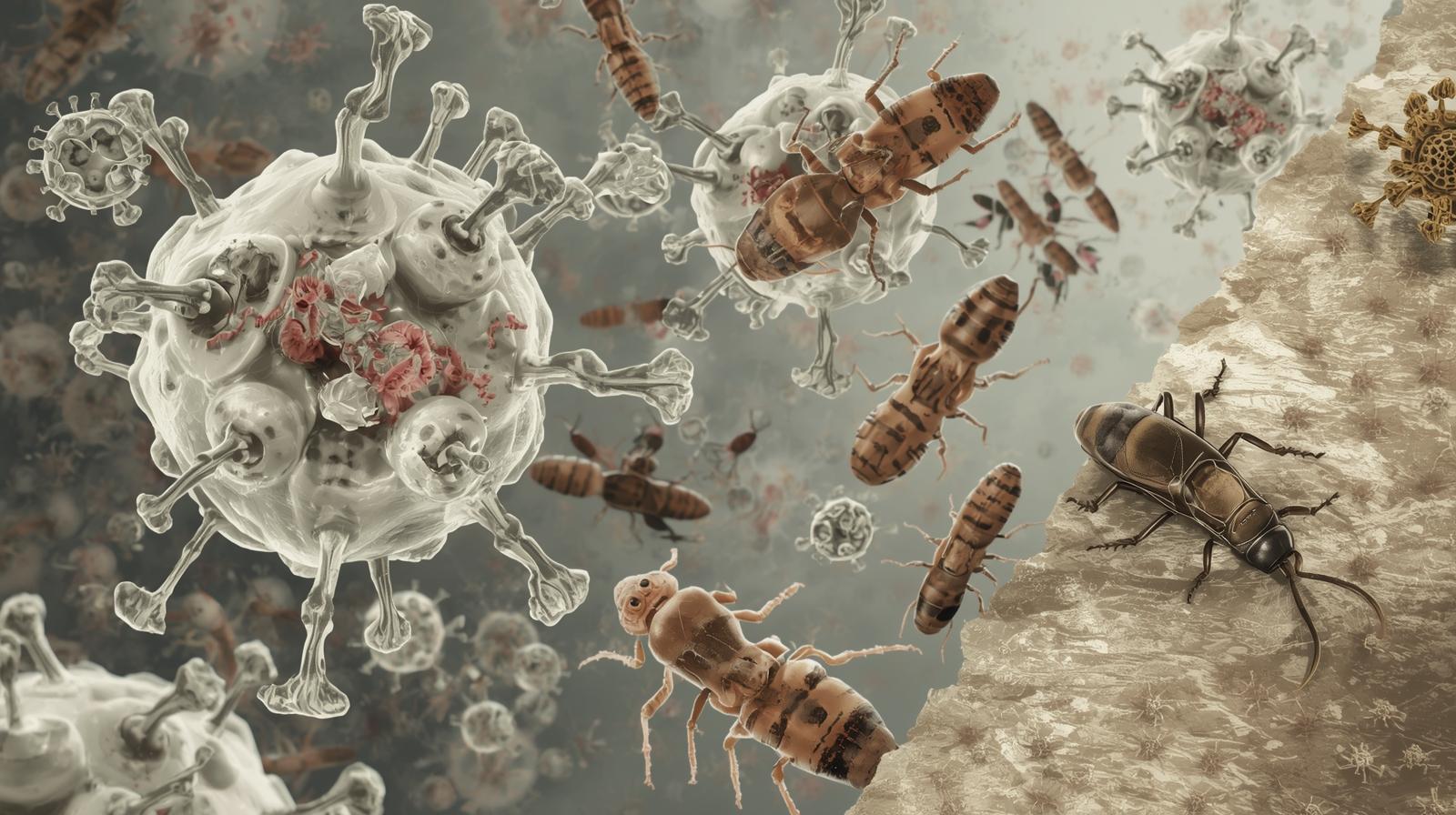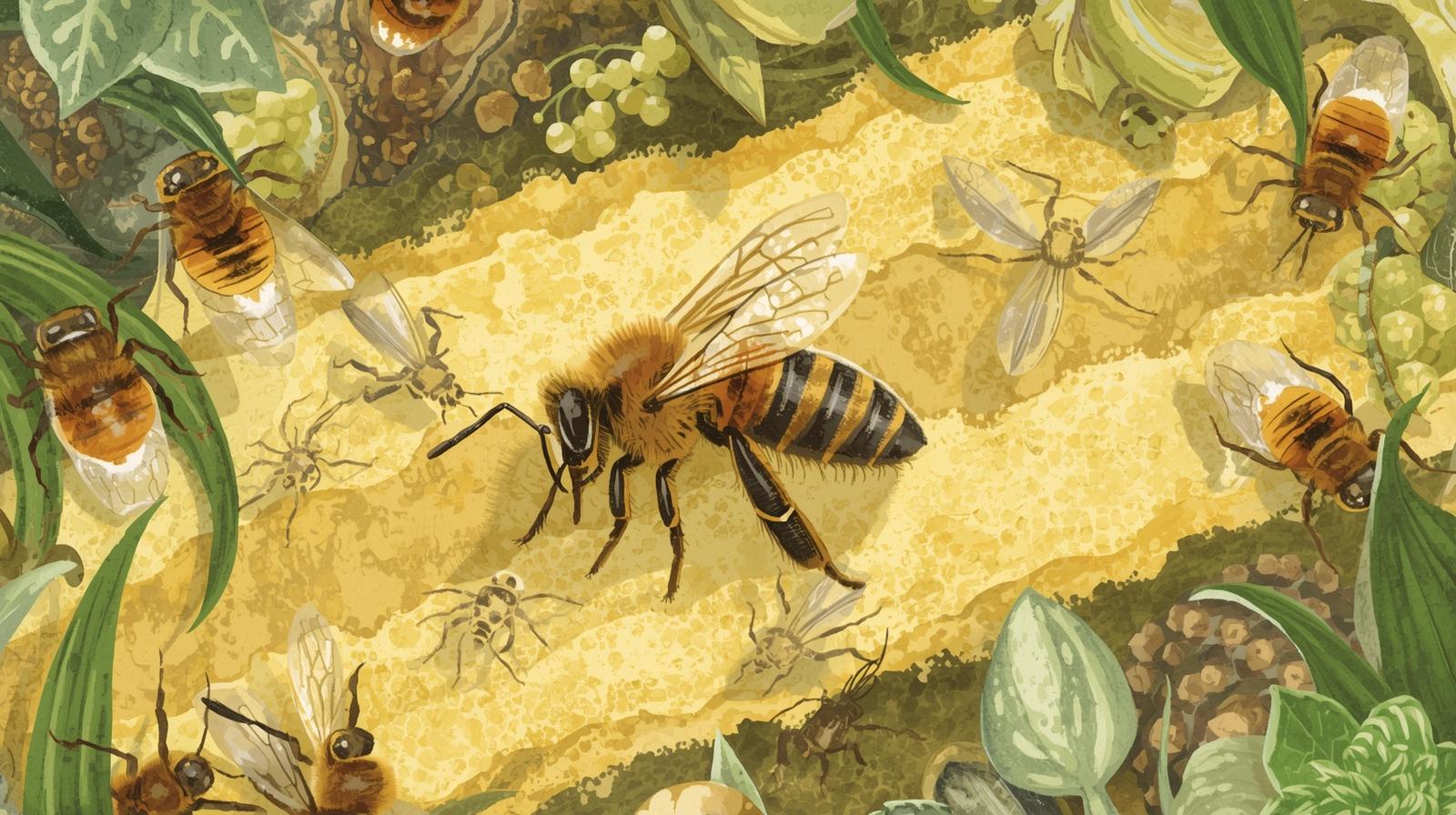Integrated Pest Management in Sunflowers: Balancing Pest Control and Pollinator Health
Sunflowers, a major global oilseed crop, face constant threats from insect pests like Helicoverpa armigera and Spodoptera litura. These pests cause severe yield losses—sometimes over 60%—if left unchecked. Traditionally, chemical pesticides have been the go-to solution, but they often harm beneficial pollinators and natural enemies essential for crop productivity.
A recent study from Sher-e-Kashmir University of Agricultural Sciences and Technology, Jammu, explores how Integrated Pest Management (IPM) can control pests while conserving pollinators and natural enemies, creating a win-win situation for agriculture and the environment.
The Study: A Closer Look
Over two years, researchers tested four IPM modules in sunflower ecosystems:
- M-I: Bioinsecticides like Bacillus thuringiensis and Spinosad
- M-II: Neem oil and Beauveria bassiana formulations
- M-III: Synthetic insecticides like Emamectin benzoate and Chlorantraniliprole
- M-IV: Control (no interventions)
Each module integrated cultural methods like deep plowing, hand-picking pests, pheromone traps, and bird perches to boost natural pest regulation.
Key Findings
- Pest Control Success:
- M-III (synthetic insecticides) achieved the highest pest reduction:
- 81.05% reduction in Helicoverpa armigera
- 82.98% reduction in Spodoptera litura
- M-III (synthetic insecticides) achieved the highest pest reduction:
- Pollinator & Natural Enemy Health:
- M-I (bioinsecticides) maintained pollinator diversity and beneficial predators while keeping pests below economic thresholds.
- Synthetic chemicals in M-III reduced bee visitation by over 56%, impacting seed set and biodiversity.
- Yield & Economic Returns:
- M-I achieved a 215.95% increase in seed yield over control with the best cost–benefit ratio (1:1.89).
Why It Matters
Sunflowers rely on bees for pollination. Higher bee visitation directly translates into better seed yields. Using bioinsecticides like Bacillus thuringiensis safeguards both pollinators and natural enemies like parasitoid wasps and ladybird beetles, creating a self-sustaining ecosystem.
A New Direction for Sustainable Agriculture
The study recommends:
- Replacing synthetic chemicals with bioinsecticides to protect biodiversity.
- Adopting pollinator-friendly IPM for long-term soil and ecosystem health.
- Promoting eco-friendly pest control policies to ensure farmer profitability and sustainability.
This approach aligns with climate-smart agriculture and global biodiversity conservation goals.
Conclusion
Integrated Pest Management in sunflowers proves that agriculture and ecology can thrive together. By combining biological controls, cultural practices, and limited chemical use, farmers can achieve high yields, economic viability, and ecological balance.
The future of sunflower farming—and sustainable agriculture at large—lies in IPM strategies that protect both crops and the environment.
Reference
Mukhtar, Y., & Shankar, U. (2024). Harmonizing pest control and beneficial organism conservation in sunflower ecosystems through integrated pest management. Journal of Plant Diseases and Protection, 131(6), 2125–2137. https://doi.org/10.1007/s41348-024-00984-0







